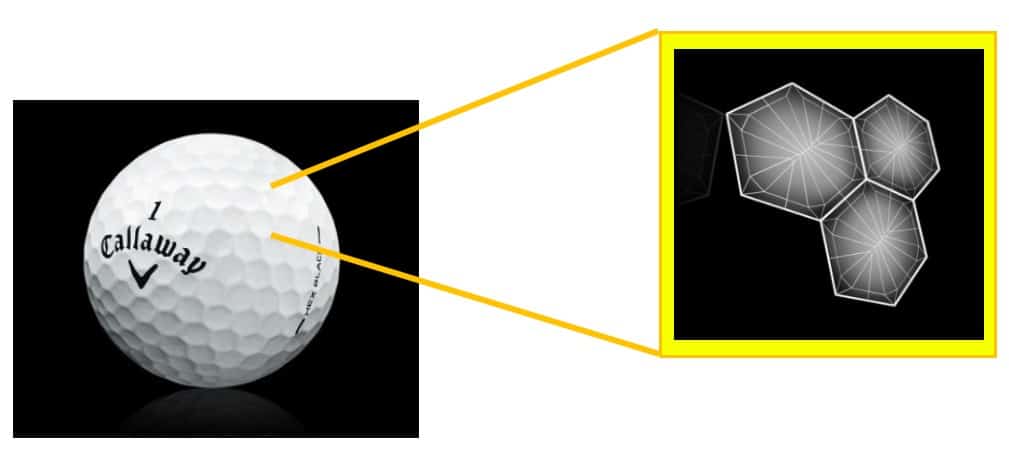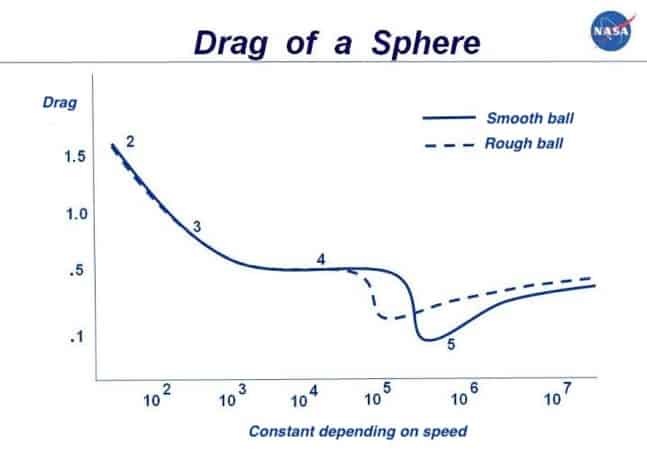Why does a golf ball have dimples?
The golf ball aerodynamics explained
The golf ball aerodynamics.
The study of aerodynamics is involved in all objects that have a “relationship” with air and speed. Often this is not always evident, especially in the small and apparently simple ones.
One of them is the golf ball aerodynamics. Examining the shape of its “rough” surface, everyone can ask the reason for this choice: in fact, instead of being smooth, it has innumerable concavities and the reason is purely aerodynamic. At the beginning of the twentieth century the saying among golfers was common “The old ball goes further than the new ball …”. The difference between the two balls is only due to the numerous carvings and grazes that the old ball has compared to the new one.
The effect of golf ball dimples on aerodynamic drag.
The concavities of the modern golf ball are precisely to replace these notches, with the function of forming a turbulent trail, behind the ball, smaller than that which is determined if the ball is smooth. A smaller wake has a lower aerodynamic drag value. However, roughness on the surface produces an increase in drag resistance.
Why does a golf ball have dimples?
For “squat” bodies, as for our ball, science shows that the value of the increase of the shape resistance coefficient is still less than the value of the decrease in drag due to the wake, therefore the total aerodynamic drag decreases, which allows the ball to fly farther. The studies have thus explained what old golfers knew through their experience. This speech, however, is not valid for streamlined bodies, as the wing profiles could be, since in this case the increase in aerodynamic drag is greater than the decrease in shape resistance and therefore the total aerodynamic drag would increase making it more difficult the advancement of the body in a fluid.
This speech, however, is not valid for streamlined bodies, as the wing profiles could be, since in this case the increase in aerodynamic drag is greater than the decrease in shape resistance and therefore the total aerodynamic drag would increase making it more difficult the advancement of the body in a fluid.
Why does a golf ball have dimples? Magnus Effect and Bernoulli’s law.
Going back to our golf ball, a second scientific reason justifying the “dimples” is the phenomenon known as the “Magnus effect“, discovered by the German physicist Heinrich Gustav Magnus in 1852. It is the responsible effect (also called “backspin”) of the variation of the trajectory of a rotating body in a moving fluid, which combined with the dimples allows to:
– accelerate the air molecules that are above the ball;
– decelerate the air molecules that are under the ball.
Golf ball aerodynamics explained.
This determines a depression (less air molecules) above the ball and a concentration (more air molecules) under the ball, creating a lift, i.e. a sustenance force that counteracts the force of gravity, a bit like what happens for the wings of an airplane.
The Magnus effect is, after all, an application of the fundamental law of fluid dynamics, “Bernoulli’s law”, which is the basis of the phenomenon of aerodynamic lift, now widely studied in various sectors, such as in aeronautical engineering and car design in Formula 1. Have you ever tried a self-correcting golf ball? Click here and check it!




